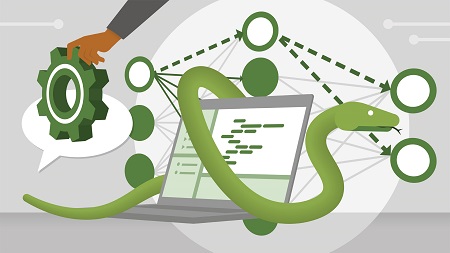
English | MP4 | AVC 1280×720 | AAC 48KHz 2ch | 2h 14m | 334 MB
An incredible amount of unstructured text data is generated every day by social media, web pages, and a variety of other sources. But without the ability to tame and harness that data, you’ll be unable to glean any value from it. In this course, learn how to translate messy text data into powerful insights using Python. Instructor Derek Jedamski begins with a quick review of foundational NLP concepts, including how to clean text data and build a model on top of vectorized text. He then jumps into more complex topics such as word2vec, doc2vec, and recurrent neural networks. To wrap up the course, he lends these concepts a real-world context by applying them to a machine learning problem.
Table of Contents
1 Leveraging the power of messy text data
2 What you should know
3 What tools you need
4 Using the exercise files
5 What is NLP
6 NLTK setup
7 Reading text data into Python
8 Cleaning text data
9 Vectorize text using TF-IDF
10 Building a model on top of vectorized text
11 What is word2vec
12 What makes word2vec powerful
13 How to implement word2vec
14 How to prep word vectors for modeling
15 What is doc2vec
16 What makes doc2vec powerful
17 How to implement doc2vec
18 How to prep document vectors for modeling
19 What is a neural network
20 What is a recurrent neural network
21 What makes RNNs so powerful for NLP problems
22 Preparing data for an RNN
23 How to implement a basic RNN
24 Prep the data for modeling
25 Build a model on TF-IDF vectors
26 Build a model on word2vec embeddings
27 Build a model on doc2vec embeddings
28 Build an RNN model
29 Compare all methods using key performance metrics
30 Key takeaways for advanced NLP modeling techniques
31 How to continue advancing your skills
Resolve the captcha to access the links!